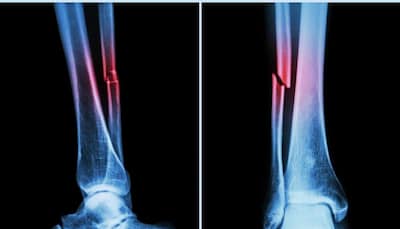Are you a regular gym-goer who winces during squats or while climbing stairs? Or an athlete who’s starting to feel discomfort while landing after a jump? Even if you’re someone who enjoys a brisk walk, pain just below the kneecap isn’t something to brush off. This could be Jumper’s Knee, more than just muscle fatigue.
Dr Ashis Acharya, Senior Consultant Orthopaedics and Sports Medicine Unit, Sir Ganga Ram Hospital New Delhi, says, “In simple terms, Persistent pain below the knee during any physical activity could indicate Patellar Tendinitis or Jumper’s Knee. Patellar tendinitis is a condition that involves inflammation or injury to the patellar tendon- the tissue that connects the kneecap (patella) to the shinbone (tibia).” He says this tendon plays an important role in straightening your leg, jumping, running, and absorbing the shock from your movement. When overused or strained repeatedly, it begins to break down, causing sharp or burning pain just below the kneecap.
This isn’t just a professional athlete’s problem. Even office goers who hit the gym in the evenings, school students participating in sports, and fitness enthusiasts can be affected.
“Our lives today are caught between sudden bursts of high-impact activities and hours of sedentary sitting. This inconsistency confuses our muscles and joints, leading to strain on connective tissues like tendons,” explains Dr Ashis. He has shared a few reasons:
• Lack of proper warm-ups and stretching before intense workouts.
• Sudden increase in physical activity or repetitive jumping and squatting.
• Tight hamstrings for quads, adding more pressure on the patellar tendon.
• Weak core and leg muscles reduce shock absorption.
• Exercising on hard surfaces and improper footwear.
According to Dr Ashis, “Early signs are often ignored until the pain becomes unbearable. By the time people walk into my clinic, they are often struggling with day-to-day moments like getting out of the car or climbing stairs”.
Unlike injuries caused by a specific accident, Jumper’s knee develops over time. Dr Ashis has shared warning signs we shouldn’t ignore:
• When you are bending your knees, you feel pain right below the kneecap
• Tenderness and swelling around the joint
• Tightness or stiffness after a longer duration of inactivity or sitting
• Discomfort while walking uphill, running, and taking stairs
• Pain after workout sessions
Dr Ashis says, “The good news is that early diagnosis and proper care can reverse the damage.” Here’s the guide how to keep your knees resilient:
• Stronger muscles protect the tendon, so strength training for quads, glutes and hamstrings becomes important.
• Stretching and foam rolling to keep muscles flexible.
• Switching to low-impact exercises, like cycling and swimming, during recovery.
• Rest and ice to manage inflammation.
• Orthopaedic examination and physiotherapy, if pain persists.
And the most important thing is to listen to your body. Pain is not a sign of progress- It is a red flag that something isn’t right.
Pain while jumping or running isn’t just a fitness hurdle- it could be your body trying to alert you to Jumper’s Knee. Acting early can save you from long term discomfort and even surgery. Because no leap forward is worth a step back in health.
Stay informed on all the , real-time updates, and follow all the important headlines in and on Zee News.











